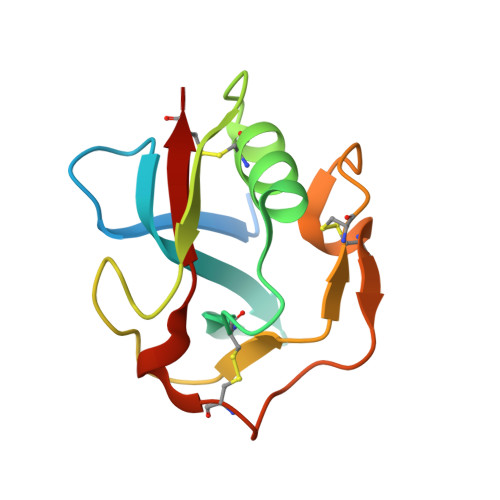The scavenger receptor SCARA1 (CD204) recognizes dead cells through spectrin.
Cheng, C., Hu, Z., Cao, L., Peng, C., He, Y.(2019) J Biol Chem 294: 18881-18897
- PubMed: 31653705
- DOI: https://doi.org/10.1074/jbc.RA119.010110
- Primary Citation of Related Structures:
6J02 - PubMed Abstract:
Scavenger receptor class A member 1 (SCARA1 or CD204) is an immune receptor highly expressed on macrophages. It forms homotrimers on the cell surface and plays important roles in regulating immune responses via its involvement in multiple pathways. However, both the structure and the functional roles of SCARA1 are not fully understood. Here, we determined the crystal structure of the C-terminal SRCR domain of SCARA1 at 1.8 Å resolution, revealing its Ca 2+ -binding site. Results from cell-based assays revealed that SCARA1 can recognize dead cells, rather than live cells, specifically through its SRCR domain and in a Ca 2+ -dependent manner. Furthermore, by combining MS and biochemical assays, we found that cellular spectrin is the binding target of SCARA1 on dead cells and that the SRCR domain of SCARA1 recognizes the SPEC repeats of spectrin in the presence of Ca 2+ We also found that macrophages can internalize dead cells or debris from both erythrocytes and other cells through the interaction between SCARA1 and spectrin, suggesting that SCARA1 could function as a scavenging receptor that recognizes dead cells. These results suggest that spectrin, which is one of the major components of the cytoskeleton, acts as a cellular marker that enables the recognition of dead cells by the immune system.
Organizational Affiliation:
State Key Laboratory of Molecular Biology, National Center for Protein Science Shanghai, Shanghai Science Research Center, CAS Center for Excellence in Molecular Cell Science, Shanghai Institute of Biochemistry and Cell Biology, Chinese Academy of Sciences, Shanghai 200031, China; University of Chinese Academy of Sciences, Shanghai 200031, China.















